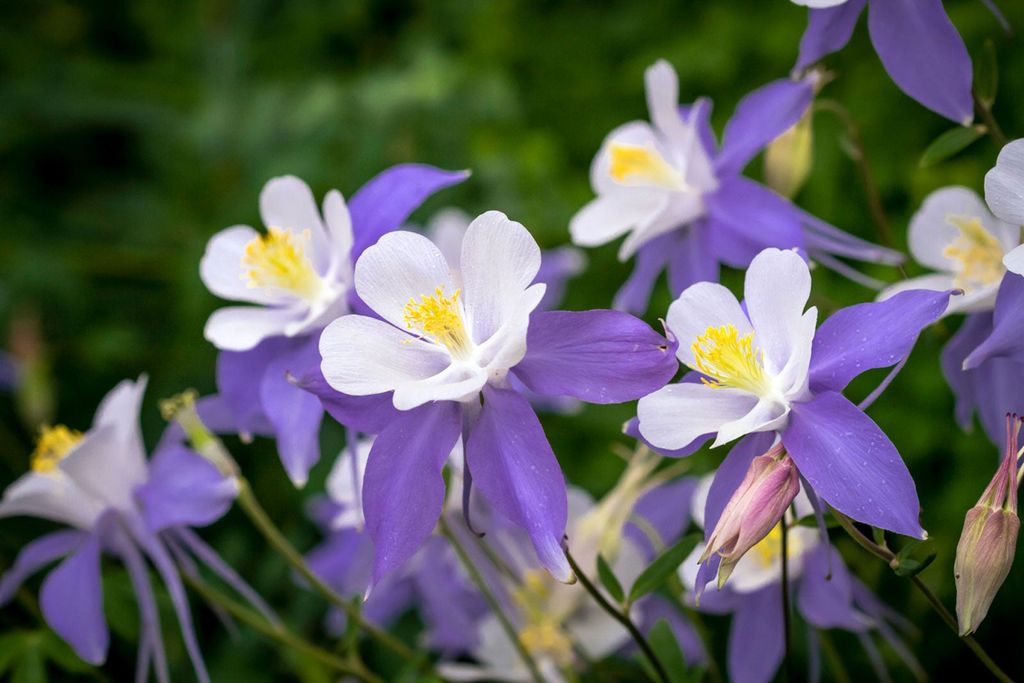How To Grow And Care For A Aquilegia (Columbine) Plant
Columbines are lovely and graceful flowers that can add some charm to any garden. These spring and summer-blooming flowers are available in various colors and sizes, making them an ideal choice for both novice and seasoned gardeners. Whether you're looking to plant these flowers for their beauty or to benefit local wildlife, it's essential to care for them adequately. Image goes here Plant Attributes Columbines are members of the Aquilegia genus, which consists of approximately 70 species. These flowers typically have nodding, bell-shaped blooms in shades of pink, purple, blue, white, and yellow. Columbine plants are typically compact, ranging from 6 inches to 3 feet in height. As perennials, columbines are long-lived plants that keep coming back year after year. They require partial shade to full sun and are suitable for growing in USDA zones 3a to 9b. Plant Care Columbines are low maintenance plants that don't require much attention once established. These plants are adaptable to various soil types, but they thrive best in well-draining soil that's rich in organic matter. They prefer a soil pH range of 5.5 to 7.0. Frequent watering is essential to keep the soil moist but never overwatered. When it comes to fertilizing columbines, a slow-release granular fertilizer applied in early spring is sufficient for the entire growing season. It's important to avoid over-fertilizing as these plants are susceptible to burning. Pruning Columbines don't require pruning, but it's beneficial to deadhead or remove faded flowers to promote continuous blooming. Deadheading also helps prevent disease and keeps the plant looking tidy. Propagation Columbines are easily propagated by seeds, which can be collected and sown in fall or early spring. After sowing, it's important to keep the soil consistently moist until germination occurs. Potting & Repotting Columbines can be grown in pots, provided they have adequate drainage. When potting columbines, use well-draining soil and avoid overwatering. Repotting is not necessary unless the plant becomes root-bound. Common Pests & Plant Diseases Columbines are generally resistant to pests and disease. However, they are susceptible to leaf miners, aphids, and spider mites. These pests can be controlled using organic insecticides or removed by hand. Common Problems Columbines can suffer from crown rot, powdery mildew, and leaf spot diseases. Crown rot occurs when the plant is overwatered, and the soil is insufficiently drained. Powdery mildew and leaf spot diseases can be prevented by providing adequate air circulation and regular watering. In Conclusion Columbines are beautiful and easy-to-care-for flowers that require minimal maintenance. These plants are perfect for adding some color and charm to any garden, and they also attract bees and hummingbirds. With the proper care, they will reward you with their stunning blooms for years to come. /AquilegiaColumbine-831741_1920-590754705f9b5810dc90374c.jpg)


/AquilegiaColumbine-831741_1920-590754705f9b5810dc90374c.jpg)
www.thespruce.com - aquilegia care columbine grow plant columbines plants flowers pixabay growing cc

www.pyracantha.co.uk - care aquilegia maintenance needed very little

www.gardeningknowhow.com - columbine columbines growing
Post a Comment for "How To Grow And Care For A Aquilegia (Columbine) Plant"